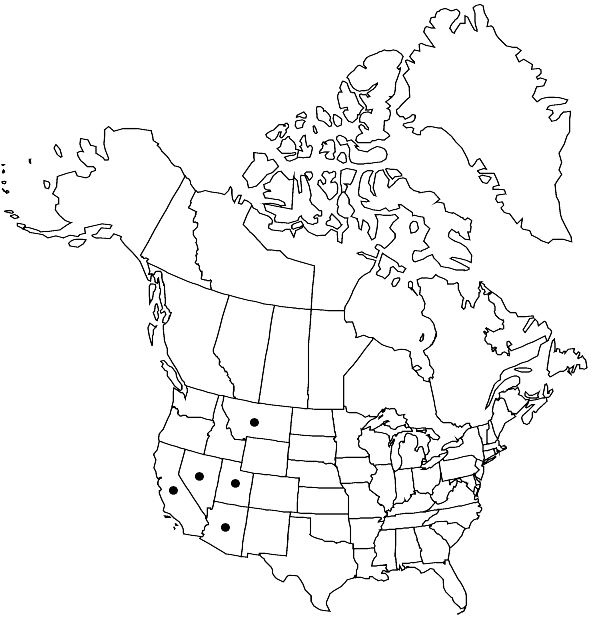Grimmia orbicularis
in J. E. Smith et al., Engl. Bot., suppl. 4: plate 2888. 1844,.
Plants in hoary, usually hemispherical cushions, grayish green. Stem 2–5 cm, central strand present. Leaves appressed and twisted when dry, erect when moist, broadly lanceolate, abruptly contracted into awn, 2–2.5 × 0.4–0.6 mm, keeled, margins recurved in the middle of the leaf on one or both sides, awns short to long, smooth to denticulate, costa weak proximally, projecting on abaxial side; basal juxtacostal laminal cells short to long-rectangular, sinuose-nodulose, thick-walled; basal marginal laminal cells short to long-rectangular, straight, with thickened transverse walls; medial laminal cells subquadrate, sinuose, thick-walled; distal laminal cells 1-stratose. Gemmae absent. Sexual condition autoicous. Seta arcuate, 2–3 mm. Capsule usually present, exserted, bent down into the cushions by the arcuate setae, yellowish-brown to chestnut-brown, globose to ovoid, smooth to weakly ribbed, when dry and empty wide-mouthed, exothecial cells thin-walled, annulus present, operculum mammillate, peristome teeth orange, broad, cribrose and irregularly cleft at apex. Calyptra cucullate.
Habitat: Dry basic rocky substrates such as limestone, basalt, and mortar
Elevation: moderate to high elevations (200-2000 m)
Distribution

Ariz., Calif., Mont., Nev., Utah, Mexico, Central America (Guatemala), South America (Argentina), South America (Chile), Europe, n Africa, Pacific Islands (New Zealand), Australia
Discussion
Grimmia orbicularis is a thermophilous species with a preference for sunny, basic substrates. In North America it is known only from scattered localities in the Southwest. It may be confused with G. pulvinata, as both species form comparable hemispherical cushions and usually grow in the same habitat. However, they differ markedly in both gametophytic and sporophytic characters. Grimmia orbicularis has leaves with short- to long-rectangular basal juxtacostal cells with thick and nodulose lateral walls, and 1-stratose margins while G. pulvinata has leaves with quadrate to short-rectangular, thin-walled, basal juxtacostal cells and 2-stratose margins. Grimmia orbicularis has globose to ovoid capsules with broad, orange, cribrose and cleft peristome teeth, and mammillate opercula while G. pulvinata has obovoid capsules with fully developed dark red peristome teeth and rostrate opercula.
Selected References
None.